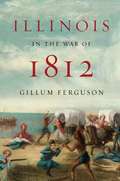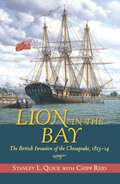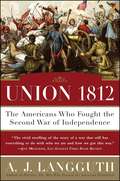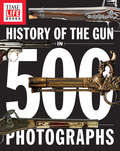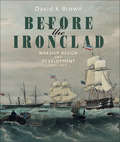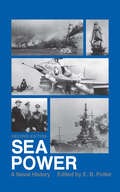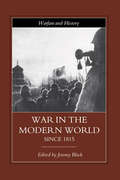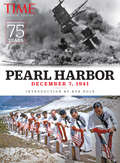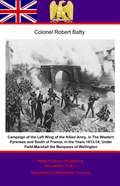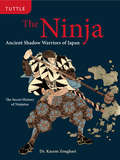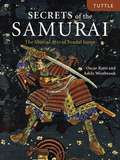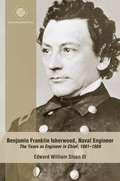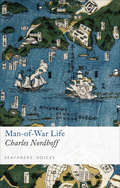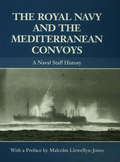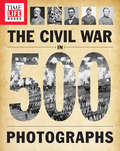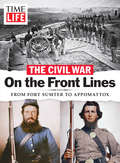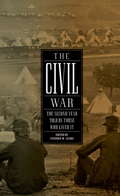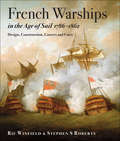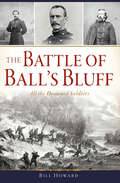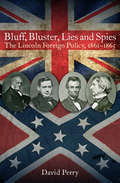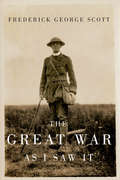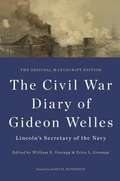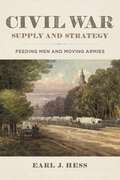- Table View
- List View
Illinois in the War of 1812
by Gillum FergusonRussell P. Strange "Book of the Year" Award from the Illinois State Historical Society, 2012. On the eve of the War of 1812, the Illinois Territory was a new land of bright promise. Split off from Indiana Territory in 1809, the new territory ran from the junction of the Ohio and Mississippi rivers north to the U.S. border with Canada, embracing the current states of Illinois, Wisconsin, and a part of Michigan. The extreme southern part of the region was rich in timber, but the dominant feature of the landscape was the vast tall grass prairie that stretched without major interruption from Lake Michigan for more than three hundred miles to the south. The territory was largely inhabited by Indians: Sauk, Potawatomi, Kickapoo, and others. By 1812, however, pioneer farmers had gathered in the wooded fringes around prime agricultural land, looking out over the prairies with longing and trepidation. Six years later, a populous Illinois was confident enough to seek and receive admission as a state in the Union. What had intervened was the War of 1812, in which white settlers faced both Indians resistant to their encroachments and British forces poised to seize control of the upper Mississippi and Great Lakes. The war ultimately broke the power and morale of the Indian tribes and deprived them of the support of their ally, Great Britain. Sometimes led by skillful tacticians, at other times by blundering looters who got lost in the tall grass, the combatants showed each other little mercy. Until and even after the war was concluded by the Treaty of Ghent in 1814, there were massacres by both sides, laying the groundwork for later betrayal of friendly and hostile tribes alike and for ultimate expulsion of the Indians from the new state of Illinois. In this engrossing new history, published upon the war's bicentennial, Gillum Ferguson underlines the crucial importance of the War of 1812 in the development of Illinois as a state. The history of Illinois in the War of 1812 has never before been told with so much attention to the personalities who fought it, the events that defined it, and its lasting consequences. Endorsed by the Illinois Society of the War of 1812 and the Illinois War of 1812 Bicentennial Commission.
Lion In The Bay: The British Invasion Of The Chesapeake, 1813-14
by Chipp Reid Stanley L. QuickThis is the story of the War of 1812 like no other, brought to life in narrative form with pinpoint historical details. As the War of 1812 raged on the high seas and along the Canadian border, the British decided to strike at the heart of the United States, the relatively undefended area of the Chesapeake Bay. The Chesapeake was a fertile farm region, a renowned place of shipbuilding and an area divided along political lines over the war. Admiral George Cockburn led the British into the bay in March 1813. After a failed attempt to take Norfolk, Cockburn led the British up and down the Chesapeake. Originally a campaign to relieve pressure from other fronts, the Chesapeake theater soon became a campaign of retribution for the British, turning what had been an economic engine for America into a region of terrorized citizens, destroyed farms and fears of slave insurrection. The blockade choked American commerce and prevented privateers from taking the war to the English. Cockburn returned in 1814 and once more terrorized the residents on both shores of the Chesapeake while stoking the political divisions that also rent the country. In August, 1814, the British capitalized on the refusal of President James Madison to bolster the defenses of the waterway that led to the nation’s capital. Cockburn again led a naval force into the bay, but this time he ran into opposition from Commodore Joshua Barney and his polyglot flotilla of warships. Barney put up an heroic though doomed fight before the British landed at Benedict, Md. , in August, 1814 and marched on Washington, D. C. After defeating the Americans at Bladensburg, the British burned Washington before returning to their boats and setting out for Baltimore. There, the British armada ran into Fort McHenry and a stalwart group of defenders. Despite a massive bombardment, the British could not silence the fort or the city’s other defenses, forcing them to retreat and give up their campaign to completely shut the Chesapeake. The victory at Baltimore, coupled with victories on the Great Lakes, helped turn the war in America’s favor.
Union 1812
by A. J. LangguthBy the author of the acclaimed Patriots: The Men Who Started the American Revolution, a gripping narrative that tells the story of the second and final war of independence that secured the nation's independence from Europe and established its claim to the entire continent. The War of 1812 has been ignored or misunderstood. Union 1812 thrillingly illustrates why it must take its place as one of the defining moments in American history.
History of the Gun in 500 Photographs
by Time-Life BooksA fascinating look into the history of the firearm and how and why it has had the impact it has on American culture and society.Few inventions have had more of a profound impact on the course of civilization than guns: The first hand-held versions were Chinese fire lances invented in the 10th century, though it was Europeans who were credited with creating the handheld weapons that we recognize today. Americans and their expansion westward were the ones who refined, and helped define innovation and the development of an industry. Starting with Samuel Colt and the ""revolver revolution,"" Americans took the lead in moving gun development forward. Names now well-known including Wesson, Winchester, and Browning helped create weapons that helped move a nation forward and ushered in the industrialized warfare of World War I. Now, TIME-LIFE, in the next book in the successful ""500 Photographs"" series, following World War II in 500 Photographs and The Civil War in 500 Photographs, brings readers the History of the Gun in 500 Photographs, which traces the fascinating evolution of firearms, not just as tools of security, but as ingenious feats of science and engineering. This book contains over 500 photos that take readers on a historical and visual journey of the gun, not just as a weapon, but as a constantly-evolving artifact that has shaped America's culture and mindset.
Before the Ironclad: Warship Design and Development, 1815–1860
by David K. BrownIn the massive revolution that affected warship design between Waterloo and the Warrior, the Royal Navy was traditionally depicted as fiercely resisting every change until it was almost too late, but these old assumptions were first challenged in this authoritative history of the transition from sail to steam. Originally published in 1990, it began a process of revaluation which has produced a more positive assessment of the British contribution to the naval developments of the period. This classic work is here reprinted in an entirely new edition, with more extensive illustration.Beginning with the structural innovations of Robert Seppings, the book traces the gradual introduction of more scientific methods and the advent of steam and the paddle fighting ship, iron hulls and screw propulsion. It analyses the performance of the fleet in the war with Russia (18531856), and concludes with the design of the Warrior, the first iron-hulled, seagoing capital ship in the world. The author presents a picture of an organisation that was well aware of new technology, carefully evaluating its practical advantage, and occasionally (as with its enthusiastic espousal of iron hulls) moving too quickly for the good of the service. Written by an eminent naval architect, Before the Ironclad is both a balanced account of general developments, and an in-depth study of the ships themselves.
Sea Power
by E. B. PotterA classic work widely acknowledged over the past 20 years as the definitive text on its subject. All aspects of over 2,000 years of naval history are covered, from Greek and Roman galley warfare to Vietnam and beyond, with emphasis on the evolution of strategy, tactics, and weapons development.With 14 authors it is not so much a symposium as a continuous narrative. Acclaimed historians such as James C. Bradford, Henry H. Adams, and Craig Symonds lend their expertsie to the work, which continues to serve as a standard for any historical stufy of the role of navies on history.
Napoleón: Fragments (classic Reprint) (El\libro Aguilar Ser.)
by StendhalConmemoramos los 250 años del nacimiento de Napoleón con esta biografía escrita de la mano de un testimonio excepcional, Stendhal. «Se trata, en efecto, del hombre más grande aparecido en el mundo desde César.» Este volumen reúne los dos intentos de Stendhal de escribir la biografía de Napoleón. Durante años se dedicó a reunir el material necesario para llevar a cabo este gran proyecto pero no llegó a terminarlo. Empezó a escribir Vida de Napoleón en 1817 cuando, a pesar de que Bonaparte ya se encontraba en el exilio, Stendhal todavía creía en su empresa. En esta primera biografía se centra en sus hazañas militares y en su experiencia como combatiente en las guerras napoleónicas. En Memorias de Napoleón, escritas en 1832, desengañado por una Francia que parecía haber olvidado el canto a la libertad, se centra en el símbolo que supuso el personaje y no duda en afirmar que aborrece al tirano pero adora poéticamente su grandeza. La presente edición incluye una magnífica introducción de Ignacio Echevarría que nos acerca a la intimidad histórica con la que Stendhal dibuja el retrato de Napoleón. El texto ha sido vertido al español por Consuelo Bergés, reconocida experta en Stendhal y traductora de la obra completa.
War in the Modern World since 1815 (Warfare and History)
by Jeremy BlackConflict is central to human history. It is often the cause, course and consequence of social, cultural and political change. Military history therefore has to be more than a technical analysis of armed conflict. War in the Modern World since 1815 addresses war as a cultural phenomenon, discusses its meaning in different socities and explores the various contexts of military action.
TIME Pearl Harbor: December 7, 1941
by Bob Dole The Editors of TIMETIME Magazine examines Pearl Harbor, 75 years later.
Campaign of the Left Wing of the Allied Army, in The Western Pyrenees and South of France, in the Years 1813-14; Under Field-Marshall the Marquess of Wellington.
by Pickle Partners Publishing Colonel Robert BattyThis ebook is purpose built and is proof-read and re-type set from the original to provide an outstanding experience of reflowing text for an ebook reader. Robert Batty, wrote a number of books on his battlefield experiences as a young subaltern, in the 1st battalion Grenadier Guards during the Napoleonic wars, notably this volume concerning the period 1813-1814. Even leaving studies in medicine at Ciaus College Cambridge in order to join the British Army. He served through out the campaigns in 1814 and also at Waterloo, achieving the rank of Colonel below leaving the service. An acclaimed artist who was to exhibit his work widely and became a Fellow of the Royal Society, his artistic eye is to the fore in these memoirs. Unlike some of his contemporaries he is honest enough to disclaim the attempt to describe those events that he did not witness, which leads to an uncommon reliability. He describes the siege of San Sebastian, and the advance of the Allied army as it outflanked each successive river position that the courageous French under Marshal Soult attempted to bar the way in excellent detail. The battles of Bayonne and Toulouse are pictured vividly. Author- Colonel Robert Batty [????-1848] of the First, or Grenadier, Guards, F.R.S.; Member of the Imperial Russian Order of St. Anne. Text taken, less watercolour pictures, from the 1823 edition, published in London by John Murray. Original - 338 pages. Linked TOC
The Ninja: Ancient Shadow Warriors of Japan (The Secret History of Ninjutsu)
by Kacem ZoughariNinjutsu is the most renowned and misunderstood of all martial arts. The long history of ninjutstu is often murky; surrounded by mystery and legend. Here, for the first time, is an in-depth, factual look at the entire art of ninjutsu, including emergence of the ninja warriors and philosophy in feudal Japan; detailed historical events; its context in the development of other schools of martial arts; and the philosophies and exercises of the school today.Based on more than ten years of study and translation of authentic Japanese texts, including many that have never before been translated, this is the most comprehensive and accurate study on the art of ninjutsu ever written outside of Japan. This ninja book includes studies of ninjutsu history, philosophy, wisdom, and presents a wide range of information from authors, historians, chronicles and scrolls in order to foster a deep understanding of this "shadowy" art.For those who train in ninjutsu, for other martial art practitioners, for historians, and for anyone with an interest in Japanese feudal history or Japanese martial arts, The Ninja: Ancient Shadow Warriors of Japan shines a light on this enigmatic subject.
Secrets of the Samurai: The Martial Arts of Feudal Japan
by Adele Westbrook Oscar RattiSecrets of the Samurai is the definitive study of the martial arts of feudal Japan, explaining in detail the weapons, techniques, strategies, and principles of combat that made the Japanese warrior a formidable foe. Beginning with a panoramic survey of the tumultuous early struggles of warlords contending for political ascendancy, the work outlines the relentless progression of the military class toward absolute power. In addition to illustrating actual methods of combat, the authors discuss in detail the crucial training necessary to develop a warrior's inner power and to concentrate all his energies into a single force.Secrets of the Samurai is an essential text for anyone with an interest in Japanese combat techniques, weaponry, or military history. This edition also contains a new foreword by Adele Westbrook and numerous previously unpublished illustrations by Oscar Ratti. Chapters include: The BushiThe HeiminThe Centers of Martial InstructionArmed BujutsuUnarmed BujutsuControl and PowerStrategic PrinciplesMorality of Bujutsu
Benjamin Franklin Isherwood, Naval Engineer
by Edward William Sloan IIIA classic account of the 40-year Naval career of Benjamin Franklin Isherwood, whose contributions to Naval engineering helped usher in the development of the modern American Navy. Focusing on the years during and immediately after the Civil War, this study chronicles the extensive contributions made by Isherwood in expanding the size and scope of the U.S. Navy.
Man-of-War Life: A Boy's Experience In The United States Navy (Seafarers' Voices)
by Charles NordhoffLike many a restless teenager before him, Charles Nordhoff craved excitement and in 1844, when barely 14, he managed to talk his way into the US Navy. A bookish lad who had been apprenticed to a printer, Nordhoff was better educated than most of his fellow seamen, and was well equipped to describe what became a three-year round-the-world adventure. He was lucky in his ship, USS Columbus, a large 74-gun ship of the line that had been chosen to undertake a diplomatic mission to China, and then to Japan, in an abortive attempt to open the latter to American trade. In the course of this voyage, Nordhoff was to see many countries of south-east Asia and the Far East, before crossing the Pacific, visiting South America, rounding Cape Horn, and finally returning to Norfolk, Virginia, having crossed the Equator six times. Apart from its descriptions of exotic climes, much of the interest in the book lies in a boys view of naval life and how the ship was run. The US Navy was small and followed very conservative principles, with an emphasis on discipline, routine and training that would have been familiar a century earlier. However, it was also subtly different: more humane in its treatment of the crew, less draconian in punishment, and a promoter of what would be considered Victorian moral values. The book offers a valuable and entertaining account of life in the last days of the sailing warship.
The Royal Navy and the Mediterranean Convoys: A Naval Staff History (Naval Staff Histories)
by Malcolm Llewellyn-JonesThis book contains the Naval Staff History originally issued by the Admiralty in 1957 as a confidential book for use within the Royal Navy. It has since been declassified and is published here for the first time, along with an extended preface. This volume describes the dangerous convoy operations in the Mediterranean which were necessary to relieve the garrison and people of Malta, covering the period from the beginning of 1941 until the end of 1942. These convoys had to be fought through against determined attack by German and Italian surface, submarine and, particularly, air forces. Although casualties were proportionately higher than in Atlantic convoys, Malta was successfully re-supplied and remained a considerable impediment to enemy’s attempts to supply their armies in North Africa. These operations reveal the dedication, courage and professionalism of the sailors (of both naval and merchant services) as well as the airmen who supported them. A new preface sets the scene for the Staff History. The Royal Navy and the Mediterranean Convoys will be of great interest for students interested in the Mediterranean Convoys, Second World War and naval and military history.
La luz que no puedes ver
by Anthony DoerrPremio Pulitzer de Ficción 2015. Un corazón puro puede brillar aun en la noche más oscura. Y en el más terrible de los tiempos. Marie-Laure vive con su padre en París, cerca del Museo de Historia Natural, donde él trabaja como responsable de sus mil cerraduras. Cuando, siendo muy niña, Marie-Laure se queda ciega, su padre le construye una perfecta miniatura de su barrio para que pueda memorizarla gracias al tacto y encontrar el camino a casa. A sus doce años, los nazis ocupan París y padre e hija tienen que huir a la ciudad amurallada de Saint-Malo. Con ellos se llevan la que podría ser la más preciada y peligrosa joya del museo. En una ciudad minera de Alemania, el joven huérfano Werner crece junto a su hermana pequeña, cautivado por una rudimentaria radio que ambos encuentran. Werner se convierte en un experto en construir y reparar estos aparatos cruciales para los nuevos tiempos, untalento que no pasa desapercibido a las Juventudes Hitlerianas. Siguiendo al ejército alemán, Werner deberá atravesar el corazón en guerra de Europa. Hasta que en la última noche antes de la liberación de Saint-Malo los caminos de Werner y Marie-Laure por fin se crucen. Y sus vidas cambien para siempre. N.º 1 en las listas de bestsellers en Estados Unidos.Finalista del National Book Award.Mejor novela de 2014 en iTunes.Entre los mejores diez libros del año para The New York Times.Nº. 1 de ficción histórica de 2014 en Goodreads.Premio 2015 Andrew Carnegie Medal de novela de la American Library Association. «Estoy leyendo un libro maravilloso. Solo llevo la mitad así que no puedo hablar hasta el final, pero es un verdadero placer. Quería contároslo. Estilo impecable, personajes maravillosos y una vívida recreación de la Segunda Guerra Mundial. ¿Qué más se puede pedir?... ¿Y no es preciosa la cubierta?»Kate Morton Reseñas:«La luz que no puedes ver es un clásico instantáneo, y, además, para todos los públicos. Quien no se deje arrastrar por su trama lo hará por la emoción, y habrá quien quede embobado, simplemente, ante el lirismo de la prosa de Doerr. Una experiencia memorable.»Juan Manuel Freire, El Dominical «Uno de los puntos fuertes de esta novela es situar al lector en la época como alguien de la época, sin todo lo que hoy sabemos y no podemos olvidar.»Inocencia Newman, Qué Leer «Inolvidablemente hermoso.»The New York Times «No creo que este año vaya a leer un libro mejor que La luz que no puedes ver. »Washington Post «Una hermosa, valiente, desgarradora y extrañamente alegre novela.»The Seattle Times «Incandescente... Una luminosa obra de lucha y trascendencia.»O, the Oprah magazine «Magnífica.»The Guardian «Una obra de arte.»BBC
TIME-LIFE The Civil War in 500 Photographs
by Time-Life BooksThe name TIME-LIFE has become synonymous with providing readers with a deeper understanding of subjects and world events that matter to us all. TIME-LIFE The Civil War in 500 Photographs is an indispensable guide to a nation-changing era and the military, social, economic, and political forces that shaped it.TIME-LIFE The Civil War in 500 Photographs provides a fresh and accessible way to understand this conflict including details of the battles and battlefields, the political maneuverings, and the personalities who defined the war continue to fascinate citizens of all ages. It lays out the war's major developments in arresting, colorized images and cover topics from the backstory through secession, the Union's early setbacks, the Underground Railroad, victories at Gettysburg and Vicksburg, and Reconstruction.For history buffs and the newly curious, The Civil War in 500 Photographs is the ultimate, easy-to-use guide to four years that changed our nation forever.
TIME-LIFE The Civil War - On the Front Lines: From Fort Sumter to Appomattox
by The Editors of TIME-LIFENorth vs. South. Brother against brother. The War of Northern Aggression. The Civil War, over 150 years in our nation's past, still weighs upon American culture and politics to this day. Now, in an all-new special edition, TIME LIFE brings readers a thorough overview of what remains the largest, longest and most bloody war set on American soil in The Civil War, On the Front Lines: From Fort Sumter to Appomattox.Written in the trademark style of TIME LIFE that marries compelling photography and illustration to thoughtful yet accessible text and graphics, The Civil War, On the Front Lines covers every facet of the war from the political and cultural divides that sparked the war, to life on the front lines for soldiers, slavery, and the war at home, to a country, once again united and transformed. Whether you're a Civil War buff or just in search of a little more information, The Civil War, On the Front Lines will bring you a thorough overview of the war that has continued to affect America.
The Civil War: The Second Year Told By Those Who Lived It
by Stephen W. SearsThe Library of America's ambitious four-volume series continues with this volume that traces events from January 1862 to January 1863, an unforgettable portrait of the crucial year that turned a secessionist rebellion into a war of emancipation. Including eleven never-before- published pieces, here are more than 140 messages, proclamations, newspaper stories, letters, diary entries, memoir excerpts, and poems by more than eighty participants and observers, among them Abraham Lincoln, Jefferson Davis, Ulysses S. Grant, George B. McClellan, Robert E. Lee, Frederick Douglass, Emily Dickinson, Walt Whitman, Nathaniel Hawthorne, Clara Barton, Harriet Jacobs, and George Templeton Strong, as well as soldiers Charles B. Haydon and Henry Livermore Abbott; diarists Kate Stone and Judith McGuire; and war correspondents George E. Stephens and George Smalley. The selections include vivid and haunting narratives of battles-Fort Donelson, Pea Ridge, the gunboat war on the Western rivers, Shiloh, the Seven Days, Second Bull Run, Antietam, Iuka, Corinth, Perryville, Fredericksburg, Stones River-as well as firsthand accounts of life and death in the military hospitals in Richmond and Georgetown; of the impact of war on Massachusetts towns and Louisiana plantations; of the struggles of runaway slaves and the mounting fears of slaveholders; and of the deliberations of the cabinet in Washington, as Lincoln moved toward what he would call "the central act of my administration and the great event of the nineteenth century": the revolutionary proclamation of emancipation.
French Warships in the Age of Sail, 1786–1861: Design, Construction, Careers and Fates
by Rif Winfield Stephen S RobertsIn 1786 the French Navy had just emerged from its most successful war of the eighteenth century, having frequently outfought or outmanoeuvred the Royal Navy in battle, and made a major contribution to American independence. The reputation of its ship design and fighting skills never stood higher, yet within a few years the effects of the French Revolution had devastated its efficiency, leading to defeat after defeat. Fine ships continued to be built, but even under Napoleon's dynamic influence the navy never recovered sufficiently to alter the balance of sea power. It was only after 1815 that the navy revived, espousing technical innovation and invention, to produce some of the most advanced ships of the age.This book is the first comprehensive listing of these ships in English, and follows the pattern set by the companion series on British warships in the age of sail in providing an impressive depth of information. It is organised by Rate, classification and class, with significant technical and building data, followed by a concise summary of the careers of each ship in every class. Thus for the first time it is possible to form a clear picture of the overall development of French warships in the latter half of the sailing era.
The Battle of Ball's Bluff: All the Drowned Soldiers (Civil War Series)
by Bill HowardThree months after the Civil War's first important battle at Manassas in 1861, Union and Confederate armies met again near the sleepy town of Leesburg. What began as a simple scouting mission evolved into a full-scale battle when a regiment of Union soldiers unexpectedly encountered a detachment of Confederate cavalry. The Confederates pushed forward and scattered the Union line. Soldiers drowned trying to escape back to Union lines on the other side of the Potomac River. A congressional investigation of the battle had long-lasting effects on the war's political and military administration. Bill Howard narrates the history of the battle as well as its thorny aftermath.
Bluff, Bluster, Lies and Spies: The Lincoln Foreign Policy, 1861–1865
by David PerryAn in-depth illustration of shifting Civil War alliances and strategies and of Great Britain's behind-the-scenes role in America's War Between the States. In the early years of the Civil War, Southern arms won spectacular victories on the battlefield. But cooler heads in the Confederacy recognized the demographic and industrial weight pitted against them, and they counted on British intervention to even the scales and deny the United States victory. Fearful that Great Britain would recognize the Confederacy and provide the help that might have defeated the Union, the Lincoln administration was careful not to upset the greatest naval power on earth. Bluff, Bluster, Lies and Spies takes history buffs into the mismanaged State Department of William Henry Seward in Washington, DC, and details the more skillful work of Lords Palmerston, Russell, and Lyons in the British Foreign Office. It explains how Great Britain's safety and continued existence as an empire depended on maintaining an influence on American foreign policy and how the growth of the Union navy--particularly its new ironclad ships--rendered her a paper tiger who relied on deceit and bravado to preserve the illusion of international strength. Britain had its own continental rivals--including France--and the question of whether a truncated United States was most advantageous to British interests was a vital question. Ultimately, Prime Minister Palmerston decided that Great Britain would be no match for a Union armada that could have seized British possessions throughout the Western Hemisphere, including Canada, and he frustrated any ambitions to break Lincoln's blockade of the Confederacy. Revealing a Europe full of spies and arms dealers who struggled to buy guns and of detectives and publicists who attempted to influence opinion on the continent about the validity of the Union or Confederate causes, David Perry describes how the Civil War in the New World was determined by Southern battlefield prowess, as the powers of the Old World declined to intervene in the American conflict.
The Great War as I Saw It
by Mark G. Mcgowan Frederick George ScottA fifty-three-year-old Anglican priest and poet when the First World War broke out, Frederick George Scott was an improbable volunteer, but also an invaluable war memoirist about life at the front. Enlisting at the very beginning of the conflict and serving on the Western Front until the Armistice, Scott became the most decorated Canadian chaplain. A High Anglican and staunch British imperialist described by one of his fellow officers as "an old snob of the old school," Scott also defied stereotypes, often rejecting the privileges he was entitled to as an officer and insisting on being at the frontlines with the rank-and-file soldiers, with whom he felt genuine kinship. As a result, he was seriously wounded in the autumn of 1918, near the end of the war. The Great War as I Saw It is an idiosyncratic portrait by a man of strong religious convictions witnessing the horror of modern warfare. In evocative prose shaped by his background as a poet, Scott moves between lighthearted moments and dark tragedy, including his wrenching account of searching for his own son's body in a ruined battlefield. Rich in detail, it is one of the most diverse and complete first-hand accounts of the war ever published.
The Civil War Diary of Gideon Welles, Lincoln's Secretary of the Navy: The Original Manuscript Edition
by William E. Gienapp Gideon Welles Erica L. GienappGideon Welles's 1861 appointment as secretary of the navy placed him at the hub of Union planning for the Civil War and in the midst of the powerful personalities vying for influence in Abraham Lincoln's cabinet. Although Welles initially knew little of naval matters, he rebuilt a service depleted by Confederate defections, planned actions that gave the Union badly needed victories in the war's early days, and oversaw a blockade that weakened the South's economy. Perhaps the hardest-working member of the cabinet, Welles still found time to keep a detailed diary that has become one of the key documents for understanding the inner workings of the Lincoln administration. In this new edition, William E. and Erica L. Gienapp have restored Welles's original observations, gleaned from the manuscript diaries at the Library of Congress and freed from his many later revisions, so that the reader can experience what he wrote in the moment. With his vitriolic pen, Welles captures the bitter disputes over strategy and war aims, lacerates colleagues from Secretary of State William H. Seward to General-in-Chief Henry Halleck, and condemns the actions of the self-serving southern elite he sees as responsible for the war. He can just as easily wax eloquent about the Navy's wartime achievements, extoll the virtues of Lincoln, or drop in a tidbit of Washington gossip. Carefully edited and extensively annotated, this edition contains a wealth of supplementary material. The several appendixes include short biographies of the members of Lincoln's cabinet, the retrospective Welles wrote after leaving office covering the period missing from the diary proper, and important letters regarding naval matters and international law.
Civil War Supply and Strategy: Feeding Men and Moving Armies
by Earl J. HessCivil War Supply and Strategy stands as a sweeping examination of the decisive link between the distribution of provisions to soldiers and the strategic movement of armies during the Civil War. Award-winning historian Earl J. Hess reveals how that dynamic served as the key to success, especially for the Union army as it undertook bold offensives striking far behind Confederate lines. How generals and their subordinates organized military resources to provide food for both men and animals under their command, he argues, proved essential to Union victory.The Union army developed a powerful logistical capability that enabled it to penetrate deep into Confederate territory and exert control over select regions of the South. Logistics and supply empowered Union offensive strategy but limited it as well; heavily dependent on supply lines, road systems, preexisting railroad lines, and natural waterways, Union strategy worked far better in the more developed Upper South. Union commanders encountered unique problems in the Deep South, where needed infrastructure was more scarce. While the Mississippi River allowed Northern armies to access the region along a narrow corridor and capture key cities and towns along its banks, the dearth of rail lines nearly stymied William T. Sherman’s advance to Atlanta. In other parts of the Deep South, the Union army relied on massive strategic raids to destroy resources and propel its military might into the heart of the Confederacy. As Hess’s study shows, from the perspective of maintaining food supply and moving armies, there existed two main theaters of operation, north and south, that proved just as important as the three conventional eastern, western, and Trans-Mississippi theaters. Indeed, the conflict in the Upper South proved so different from that in the Deep South that the ability of Federal officials to negotiate the logistical complications associated with army mobility played a crucial role in determining the outcome of the war.
